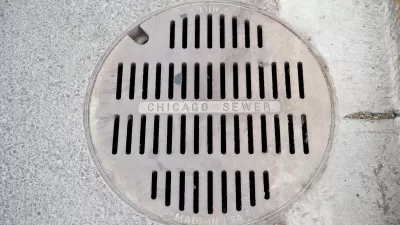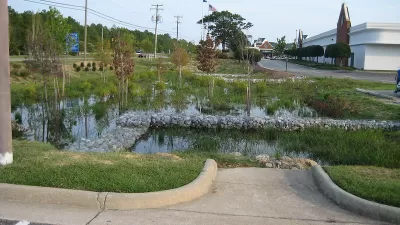Only one coastal city has a sewer system that must handle stormwater as well as wastewater. San Francisco's efforts to adapt its combined sewer-stormwater system has put it on the vanguard of the city's climate adaptation efforts.
"Using combined systems was common practice for urban sewers built before the turn of the 20th century, said [San Francisco Public Utilities Commission] PUC General Manager Harlan Kelly Jr., when wastewater and rainfall both were typically dumped into nearby bodies of water," reports Dominic Fracassa for the San Francisco Chronicle on Oct. 21.
Because the city's sewer system can be easily overwhelmed during heavy downpours, and is vulnerable due to king tides and sea level rise, all of which will become more intense due to climate change, the San Francisco Public Utilities Commission, which provides retail drinking water and wastewater services to the city of San Francisco, is at the forefront of climate adaptation efforts.
The PUC’s improvement program will be rolled out in phases through 2032. The improvements themselves — everything from replacing outdated sewer pipes to raising critical electrical systems in treatment plants in anticipation of the higher sea waters — are designed to respond to how San Francisco’s climate could look in the year 2100.
Another critical element of the PUC plan is an ambitious program of installing bioretention or rain gardens to divert stormwater from the sewer system and allow it to be absorbed into the ground. "[B]y allowing natural processes to take over the work we've been building infrastructure to handle, operations and maintenance costs also fall," according to a 2012 study on green infrastructure co-authored by the American Society of Landscape Architects.
In August, Fracassa reported on a ribbon-cutting by the PUC for the first of the eight rain gardens planned for the Ingleside district, an investment of $7.3 million.
FULL STORY: SF embarking on major projects to bolster sewer system

Trump Administration Could Effectively End Housing Voucher Program
Federal officials are eyeing major cuts to the Section 8 program that helps millions of low-income households pay rent.

Planetizen Federal Action Tracker
A weekly monitor of how Trump’s orders and actions are impacting planners and planning in America.

Ken Jennings Launches Transit Web Series
The Jeopardy champ wants you to ride public transit.

Opinion: Transit Agencies Must View Service Cuts as Last Resort
Reducing service could cripple transit systems by pushing more riders to consider car ownership, making future recovery even less certain.

‘Smart Surfaces’ Policy Guide Offers Advice for Building and Maintaining Urban Tree Canopies
Healthy, robust tree canopies can reduce the impacts of extreme heat and improve air quality.

New Jersey Lawsuit Targets Rent-Setting Algorithms
The state of New Jersey is taking legal action against landlords and companies that engage in what the state’s Attorney General alleges is illegal rent fixing.
Urban Design for Planners 1: Software Tools
This six-course series explores essential urban design concepts using open source software and equips planners with the tools they need to participate fully in the urban design process.
Planning for Universal Design
Learn the tools for implementing Universal Design in planning regulations.
Heyer Gruel & Associates PA
Ada County Highway District
Institute for Housing and Urban Development Studies (IHS)
City of Grandview
Harvard GSD Executive Education
Toledo-Lucas County Plan Commissions
Salt Lake City
NYU Wagner Graduate School of Public Service





























